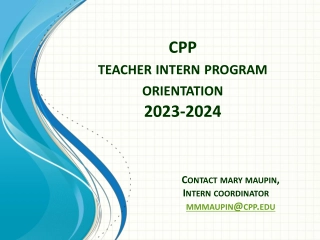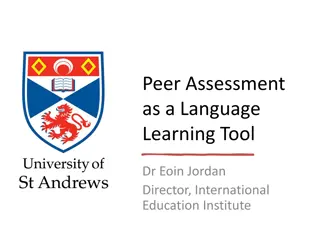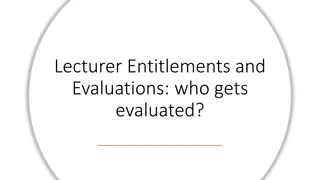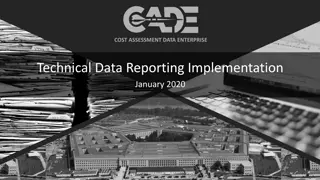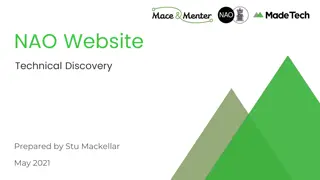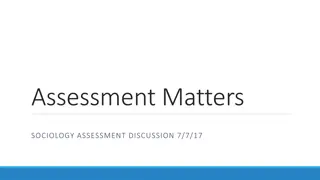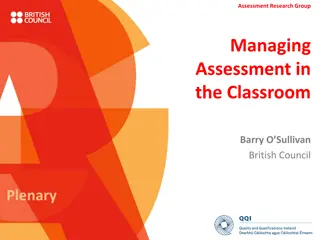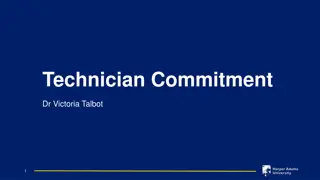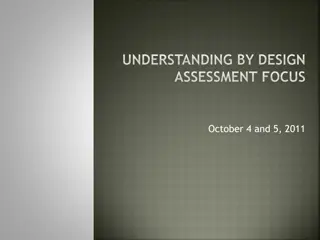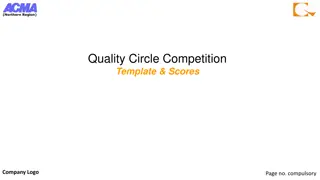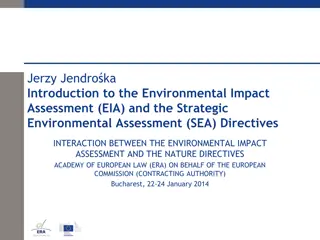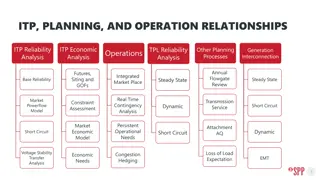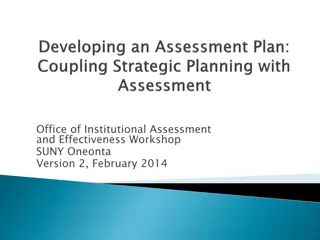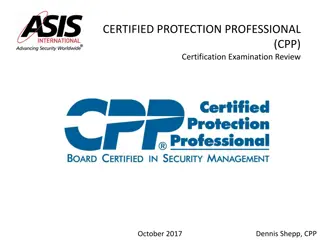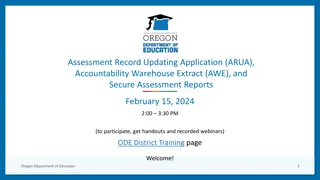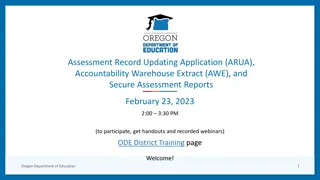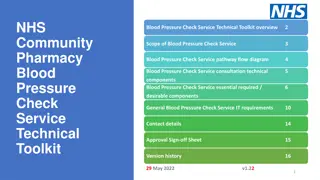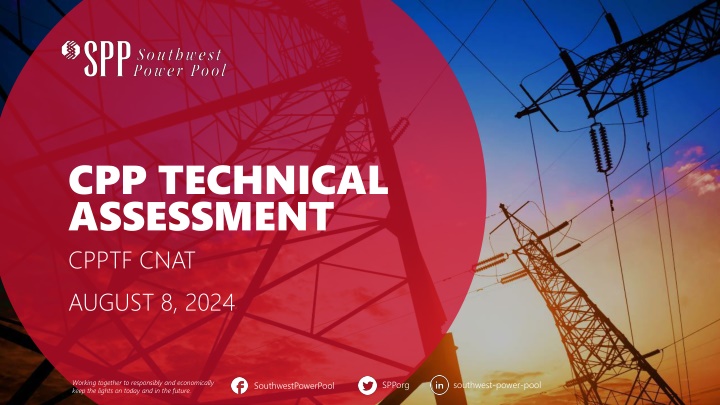
Technical Assessment and Model Development in Power Sector
Explore the ongoing analysis and development of power grid models for reliable and cost-effective energy transmission. Learn about base case approaches, service protection, and challenges for transitioning studies in the Southwest Power Pool. Dive into discussions on stability analysis and the evolution of power grid technologies.
Download Presentation

Please find below an Image/Link to download the presentation.
The content on the website is provided AS IS for your information and personal use only. It may not be sold, licensed, or shared on other websites without obtaining consent from the author. If you encounter any issues during the download, it is possible that the publisher has removed the file from their server.
You are allowed to download the files provided on this website for personal or commercial use, subject to the condition that they are used lawfully. All files are the property of their respective owners.
The content on the website is provided AS IS for your information and personal use only. It may not be sold, licensed, or shared on other websites without obtaining consent from the author.
E N D
Presentation Transcript
CPP TECHNICAL ASSESSMENT CPPTF CNAT AUGUST 8, 2024 Working together to responsibly and economically keep the lights on today and in the future. SPPorg southwest-power-pool SouthwestPowerPool
OVERVIEW Draft GI Model Development and Analysis Options Base case approach and service protection Study case approach and granting new service Challenges for transition study vs. ongoing assessments NOTE: Discussion largely focused on CPP ongoing steady-state analysis Need to continue discussion on applicability to stability analysis and changes needed for transition study 2
GI BASE MODEL DEVELOPMENT AND ANALYSIS 3
BASE CASE DEVELOPMENT - TODAY ITP Base Reliability (BR) ITP BR will continue to be available. Under normal conditions: Only firm generation and transmission service is available for dispatch / transfer Generation with effective interconnection agreement (IA), not on suspension are modeled offline if not associated with transmission service ITP Market Economic Model (MEM) Input Powerflow Similar to ITP BR, but includes additional resources identified through the ITP resource expansion and siting plan milestones Additional generation is modeled offline in the powerflow model, but will be available for dispatch in the MEM production cost analysis (i.e. PROMOD) GI Base / Prior-queued / Pre-Transfer Case Starts with ITP BR and layers in updates under ITP manual rules Generation included offline (i.e. non-firm) in the BR is considered prior-queued Additional prior-queued generation is added depending on ongoing DISIS Prior-queued generation is dispatched using service type, GI group and fuel-based dispatch rules in GI manual NRIS analyzed as both NRIS and ERIS in dispatch scenarios 4
HIGH LEVEL GI BASE MODEL FLOW Annual Model Build ITP BR (Capacity Model) DISIS Pre- Transfer Case DISIS PQ Topology Firm service dispatch Addition prior- queued generation representation ERIS/NRIS groups 1-5 dispatch scenarios 5
PRIOR-QUEUED TIMING IN THE CPP Customer Window Entry Fee Commitment 2026 2027 2028 2029 Quarter> 1 2 3 4 1 2 3 4 1 2 3 4 1 2 3 4 2026 ITP / CPP Transition / 20 YR Assessment CPP Transition Study (Cycle 1, Annual Study 1) CPP Cycle 1 Annual Assessment 2 CPP Annual Assessment CPP Cycle 1 Annual Assessment 3 CPP Annual Assessment Observations The open window for customers will likely take place near the beginning or mid-point of the resource siting process (which should be streamlined in the stand-alone annual studies) The initial reliability assessment cannot be performed until the resource siting process is complete, currently in the July timeframe ~1 year after the start of the study Entry fee commitments would likely be required by the end of the year following the customer open window Conclusion: Even if the CPP is designed such that the process becomes agnostic to customer withdrawals, the overlapping studies should not create a prior-queued customer issue in the ongoing process that would affect model development and analysis design 6 Notes: *Customer window and entry fee commitment dates not confirmed
BASE RELIABILITY MODEL UTILIZATION FOR GI ASSESSMENT CPP Transition/ Long Term Studies (20-Year Horizon) Light Load Summer Peak Summer Shoulder Winter Peak Year 5 Year 10 Year 20 CPP Annual Studies (10- Year Horizon) Light Load Summer Peak Summer Shoulder CPP Annual Studies (10- Year Horizon) Light Load Summer Peak Summer Shoulder Winter Peak Winter Peak Year 5 Year 5 Year 10 Year 10 Year 20 Year 20 7
BASE CASE DEVELOPMENT MODIFIED BR MODEL FOR BASELINE RELIABILITY Utilize MEM input model Includes resource expansion plan staged through year 20 All GI with IA on schedule included? Implement basic dispatch of all resources using ITP methodology Considerations: Able to serve all load through year 20 without complex methodology LREs take ownership of new resources from a baseline reliability perspective to ensure limited deliverability to load Could slightly blur the line between protection of existing service and sale of new service 8
RESOURCE DISPATCHING SPECIFICS Modified ITP BR ERIS / NRIS+ Include and treat all existing resources and resource expansion plan as firm Utilize ITP dispatch methodology. Potential modifications: Use resource plan ownership assignments to define sink groups, rather than LRE, but this may not capture all available resources and leave some offline (depending on SPP Other approach in MEM) or, expand sink groups to DA and utilize all resources Expected usage / accreditation ECDI (conventional) and historical average (renewable) Define source and sink (traditional or DA) 9
BASE CASE DEVELOPMENT PRE-TRANSFER CASE / PROTECTION OF SERVICE Utilize Modified BR Maintain modified BR dispatch for energy only resources (non-firm) Dispatch all firm resources per transfer scenarios Perform NRIS+ transfer scenarios Inter-LOLE zone transfers within each DA (see diagram in GI study model development slides) Include all firm resources ERIS with transmission service at accredited amounts (expected usage) NRIS+ at accredited amounts (expected usage) Conventional not to exceed PBA Renewable modeled at 5-year average per season (consistent with ITP BR methodology Consideration of ERIS Protect as-available ERIS service through economic (production cost) analysis 10
BASE CASE USAGE Violation Identification Address issues created by modified BR methodology Utilize GI study approach recommendation to address issues created by firm service protection recommendation Violation Responsibility All violations identified for transmission reinforcements considered responsibility of load: To maintain ability to serve firm load expectations in the planning horizon To maintain existing firm service 11
GI STUDY MODEL GI STUDY MODEL DEVELOPMENT AND DEVELOPMENT AND ANALYSIS ANALYSIS 12
GI CUSTOMER FRAMEWORK Invest, Connect and Manage (ERIS) or Deliver (CRIS) Invest Manage (ERIS) Connect (Direct Assigned) Deliver (CRIS) (Regional & Subregional Entry Fee) Identify contribution from GI customers to holistic long- term transmission expansion needs of the system Invest and connect contributions to transmission expansion facilitate reliable and more efficient system usage Identify transmission needs of specific interconnection customers to deliver to load within each deliverability area Cost-sharing of transmission needed for load and GI customers across multiple studies Identify transmission needs of specific interconnection customers to connect to the system Proactive facilitation of prospective customer needs Maintain operational reliability 13
INVEST, CONNECT, AND MANAGE OR DELIVER Invest Contribution to transmission build identified from global transmission needs identified through reliability and economic analysis Connect Contribution to transmission build identified from local transmission needs identified through reliability analysis Interconnection facility and POI needs Manage Identify ways to allow new generation to connect and operate faster and more efficiently Deliver Gen and load needs to grant and maintain NRIS+ deliverability 14
COMBINING RELIABILITY AND ECONOMIC ANALYSIS Deterministic Reliability Studies: Stochastic Production Cost Studies: Power Transfer Analysis Based on snapshots of pivotal local and system-wide conditions. Assess reliability performance in steady-state, stability, and electromagnetic transients. Identifies critical transmission limits. Determines the minimum necessary construction to uphold the desired level of reliability. Based on 8,760 hours of Security- Constrained Unit Commitment (SCUC) & Security-Constrained Economic Dispatch (SCED). Deterministic Reliability Studies provide pivotal transmission constraints for DC linear power flow. System-wide Generation and Load Operating Constraints for SCUC are identified for DC Linear power flow to inform snapshots. Aid in identifying necessary infrastructure to maintain the determined level of reliability. Thermal Flowgate Limits Power Transfer Limit Thermal Flowgate Limits with Thermal Adjusted Ratings Voltage Stability Limits Angular Stability Limits Time Domain Stability Limits Power Transfer Amount Goals: Identify pivotal transmission limits Evaluate upgrade performance based on reliability and economics Maximize economic benefits Manage total transmission build while maintaining determined level of reliability 15
TRANSFER SCENARIOS Initial Reliability Assessment includes Inter-DA transfers Inter-LOLE transfers within individual DA as Intra-DA transfers Given each existing and planned resource has an intrinsic capacity accreditation, energy and reliability value How do we find a balance between studying units dispatched simultaneously at 100% versus how they simultaneously operate to serve system demand and energy? Do we need to establish reliability transfer capability targets for inter-LOLE and inter-DA transfer amounts to not over or under build transmission system and result in low or high utilization (B/C ratios)? Do targets need to be based on accreditation of resources plus some adder like a Transmission Reliability Margin based on the Forced Outage Rate of Sink Generation? How do we dispatch resources up to targeted levels? 16
MODELING AND ASSESSMENT FOOTPRINTS ERIS CRIS Deliverability Areas (ERIS Transfer) Each colored arrow pair represents a different transfer scenario (i.e. 3 ERIS per model) 17
MODELING AND ASSESSMENT FOOTPRINTS NRIS+ Inter-LOLE and Deliverability Area (NRIS+ Transfer) Each unique arrow represents a different transfer scenario (i.e. 6 NRIS+ per model) 18
IDENTIFICATION OF TRANSMISSION NEEDS GI RELIABILITY POTENTIAL OPTION 1 ERIS Approach ERIS Inter-DA Transfers (Nameplate) Identify worst case local needs in close proximity to requests Identify worst case global DA needs ERIS Inter-DA Transfers (Accredited Capacity + Margin) Identify expected local needs in close proximity to requests Identify expected global DA needs Used to couple with and reclassify worst case needs and identify gen and load needs out of DA Exclude needs out of DA NRIS / CRIS / NRIS+ NRIS Intra-DA Transfers (Nameplate) Identify worst case gen and load deliverability needs for intra-DA transfers NRIS Intra-DA Transfers (Accredited Capacity + Margin) Identify expected gen and load deliverability needs for intra-DA transfers Used to couple with and reclassify worst case gen and load deliverability needs Include needs out of DA to capture loop flows 19
IDENTIFICATION OF TRANSMISSION NEEDS GI RELIABILITY POTENTIAL OPTION 2 ERIS / NRIS+ Studied as ERIS Study nameplate / request amount Identify worst case local needs, automatically exclude needs out of DA Accredited Capacity (+ Margin?) Identify global DA needs NRIS+ Only Identify deliverability needs from inter-DA transfers Include out of DA needs Additional Questions Should we consider changes to existing thresholds to support need identification objectives under this approach? ERIS Reduce TDF in control area to 10%? 15%? Increase TDF out of control area, in DA, to 25%? NRIS+ Maintain thresholds consistent with TSR analysis in the aggregate study Should ERIS analysis be limited to ITP generator outlet facility (GOF) analysis approach? Is this more in line with the invest, connect and manage? 20
ECONOMIC ANALYSIS IN GI Essentials Market-based dispatch in production cost model Essentially expected usage of resources based on economics All resources effectively analyzed as ERIS Application Used to augment GI thermal analysis for more global issues Limit more marginal needs identified in reliability analysis Fill in gaps for streamlined reliability analysis in option 2 21
CPP TRANSITION STUDY CPP TRANSITION STUDY SPECIFIC CHALLENGES SPECIFIC CHALLENGES 22
CPP/GI OVERLAP PRIOR QUEUE IMPACTS Initial GIA GIA Addendum to GIAs GIA Quarter> 1 2 3 4 1 2 3 4 1 2 3 4 1 2 3 4 1 2 3 4 CPP Transition CPP Annual 2026 ITP / CPP Transition / 20 YR Assessment CPP Annual Assessment GIA 2026 ITP CPP siting work GIA How do we consider ongoing DISIS studies in the CPP model development and analysis if locations are not leveraged for the resource siting plan? GIA GIA GIA GIA GIA GIA GIA GIA GIA GIA GIA Completion with 1 unplanned study GIA GIA GIA 23
CPP/GI TRANSITION OVERLAP Considering ongoing DISIS studies in the CPP Transition How do we consider ongoing DISIS studies in the CPP model development and analysis if request locations are not leveraged for the resource siting plan? Model development Modeling and dispatch of prior-queued requests under study in the modified BR Modeling of requests if any DISIS are directly included in the transition study Assessment Identification of transmission needs Responsibility of identified transmission needs Additional Analysis Do we need to perform traditional DISIS analysis in addition to new proposals to better understand the impact of the changes? 24
APPENDIX APPENDIX 25
GI CUSTOMER FRAMEWORK Invest, Connect and Manage (ERIS) or Deliver (CRIS) Invest Manage (ERIS) Connect (Direct Assigned) Deliver (CRIS) (Regional & Subregional Entry Fee) Identify contribution from GI customers to holistic long- term transmission expansion needs of the system Invest and connect contributions to transmission expansion facilitate reliable and more efficient system usage Identify transmission needs of specific interconnection customers to deliver to load within each deliverability area Cost-sharing of transmission needed for load and GI customers across multiple studies Identify transmission needs of specific interconnection customers to connect to the system Proactive facilitation of prospective customer needs Maintain operational reliability 26
CPPTF APPROVED RECOMMENDATION Approves establishing an initial framework for the technical assessment approach to complement the cost-sharing and certainty concept, the task force hereby approves the development of the Invest, Connect, and Manage (ERIS) or Deliver (CRIS) framework for GI customers. Framework Approval: The task force approves the utilization and further development of the Invest, Connect, and Manage (ERIS) or Deliver (CRIS) framework for GI customers. The technical assessment considerations for GI customers, particularly Generator assessments, shall ensure consistency between long-term assessments and annual assessments, including adherence to GI customer assessment assumptions. The motion passed unanimously. 27
POTENTIAL KEY ITEMS TO ADDRESS* How do we go from today s reliability only analysis to tomorrow s reliability analysis coupled with congestion analysis for GI and economics in CPP? Determine level of reliability and acceptable curtailments/redispatch and congestion for both existing and new resources How can GI analysis utilize the market economic model (MEM)? Consider invest, connect, and manage / deliver How to approach pre-transfer case (DISIS base) criteria violations in reliability assessment When do we build new transmission? Define close proximity criteria for local interconnection needs Define criteria for global interconnection needs to be coupled with congestion analysis thresholds Severity and contribution criteria to compliment cumulative and TDF threshold criteria Must fix criteria for TPL events that are not part of congestion analysis and market operations Identifying generation versus load deliverability needs 28 *Not an all-inclusive list of items to be addressed for the CPP transition study
PERFORM ALL THREE ASSESSMENT TYPES TO BUILD OUT CPP AND ENTRY FEE Are these stand-alone analysis or should they feed into each other? The ITP outlet way ITP Siting and GOF Reliability Analysis ITP DC Thermal FCITC for Siting and Generator Outlet Facility Milestones Per POI Injection (Stand-Alone) Decrements for Legacy and Non-Legacy generation at same POI Uses ITP Base Reliability Models ITP manual allows flexibility on whether or not to include in Market Economic Model Build The GI analysis way DISIS Reliability Analysis Steady-State Models, Scenarios and Analysis Stability Models, Scenarios and Analysis Short-Circuit Models, Scenarios and Analysis Model and Scenario Selection and Reduction Questions Model Development and Selection Questions for Year 10 and 20 Analysis Selection, Reduction, and Consolidation Questions (ERIS TDF Threshold, Pre-Transfer Case Criteria Violations) The CRIS transition study way CRIS Transition Study Reliability Analysis DC Thermal Flowgate Screening Analysis for both ERIS and CRIS Identifies and dispatches up Legacy, Non-Legacy, Prior queued, Current Queue generators with like impacts on thermal transmission limits and defined interfaces Model Selection Questions Criteria Development Questions Pre-Transfer Case Criteria Violations before Current Queue generators process questions (CPP Sites) AC Supplement Selection Questions Challenges May not be enough for evaluating long term impacts for generator interconnection Identification of outlet facilities to improve economic model simulation Identification of ERIS reliability constraints to consider for transmission reinforcements in economic analysis Identification of CRIS reliability constraints that do not need economic analysis review. Must fix reliability 29
Lower TDF Threshold under contingency with Adding Proximity Criteria and Removing 3% TDF impact under system intact ASSESSMENT APPROACH Need Criteria / Transmission Reinforcement Criteria 20% TDF impact under contingency conditions 3% TDF impact under System Intact conditions Add Proximity Criteria due to Footprint Sink Add Must Fix Criteria for TPL Events not part of Congestion Analysis and Market Operations Add Criteria to Leverage Unadjusted Transfer Capability to determine whether to allow congestion analysis to determine need for transmission reinforcement Dispatch Scenarios Adjusts Transfer Capability by decrementing off- line generation from expected levels at same POI Potential future add on that was never put into production that identified impacts of common generators beyond the POI Recommendation ITP Siting and Generator Outlet Facilities Evaluation Purpose Screening Level Exercise for Siting Generation Captures stand-alone Thermal Issues for a Point of Interconnect Grouping N/A Potential future add on that was never put into production that identified impacts of common generators beyond the POI Models ITP BR Models Dispatch Source = POI Sink = Footprint 30
IN SUMMARY Analysis Case Generator Outlet Facility FCITC Reliability Base Dispatch Scenario Year 5, 10, and 20 Variation Models Purpose Adjusted for existing generation at POI Pre-Screening Sites, Coupling with other Needs ITP Base Unadjusted for existing generation at POI Coupling with Adjusted FCITC and other Needs DISIS Modified without Legacy Resources (Level of Reliability 1) Worst case Local Needs in close proximity to Requests and Global DA needs, Exclude Needs Out of DA ERIS Inter-DA Transfers Summer, 3 DAs Winter, 3 DAs 18 per Future Simultaneous Dispatch of Resource Plan at Nameplate NRIS Intra-DA Transfers Summer, SPP Region Winter, SPP Region 6 per Future Worst case gen and load deliverability needs Resource Adequacy Local Needs in close proximity to Requests and Global DA needs, Used to couple with and reclassify worst case Needs and identify Gen and Load Deliverability needs out of DA ERIS Inter-DA Transfers Summer, 3 DAs Winter, 3 DAs Simultaneous Dispatch of Resource Plan at Accreditation plus Planning Reserve Margin as a Transmission Reliability Margin 18 per Future Used to couple with and reclassify worst case gen and load deliverability needs NRIS Intra-DA Transfers Summer, SPP Region Winter, SPP Region 6 per Future DISIS Modified with Legacy Resources (Level of Reliability 2) ITP Base Reliability ERIS Inter-DA Transfers Summer, 3 DAs Winter, 3 DAs Worst case Local Needs in close proximity to Requests and Global DA needs, Exclude Needs Out of DA 18 per Future Simultaneous Dispatch of Existing Resources and Resource Plan at Nameplate Summer, 6 LOLE Zones Winter, 6 LOLE Zones NRIS Intra-DA Transfers Worst case gen and load deliverability needs for intra-DA transfers of existing and resource plan units 36 per Future Resource Adequacy Local Needs in close proximity to Requests and Global DA needs, Used to couple with and reclassify worst case Needs and identify Gen and Load Deliverability needs out of DA ERIS Inter-DA Transfers Summer, 3 DAs Winter, 3 DAs Simultaneous Dispatch of Existing Resources and Resource Plan at Accreditation plus Planning Reserve Margin as a Transmission Reliability Margin 18 per Future Resource Adequacy gen and load deliverability needs for intra-DA transfers of existing and resource plan units used to couple with and reclassify worst case gen and load deliverability needs Summer, 6 LOLE Zones Winter, 6 LOLE Zones NRIS Intra-DA Transfers 36 per Future 31
ITP BR BENEFITS Closes existing reliability analysis gap in ITP assessment in supporting resource plan assumptions made in the Economic Planning Acknowledges intrinsic capacity accreditation, energy and reliability value of all existing and planned resources and sites Additional Model to support MEM and MPM to increase benefits to region to proactively plan the system of all Existing Resource, Resource Plan and Sites using the expected usage ITP BR dispatch methodology per Deliverability Area (DA) (aka CRIS Protection for all existing and planned resources in a DA) Eliminates Numerous DISIS Steady State and Dynamic Model and answers claims that DISIS Pre-Transfer Case Criteria Violations are inequitable and result in non-holistic planning for Generation Interconnection Requests 32
MODELING AND ASSESSMENT FOOTPRINTS CRIS Deliverability Areas (ERIS Transfer) Inter-LOLE and Deliverability Area (CRIS Transfer) Each unique arrow represents a different transfer scenario (i.e. 3 ERIS / 6 NRIS+ per model) 33

